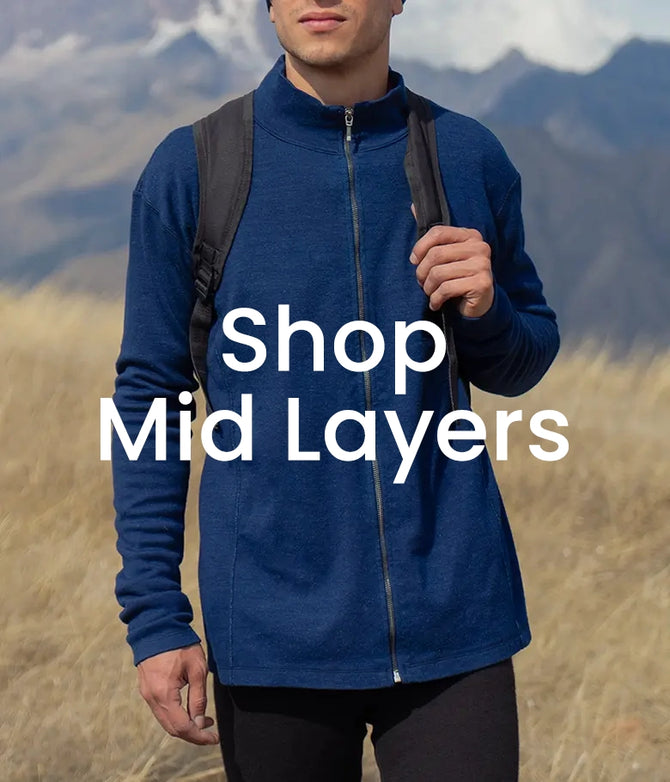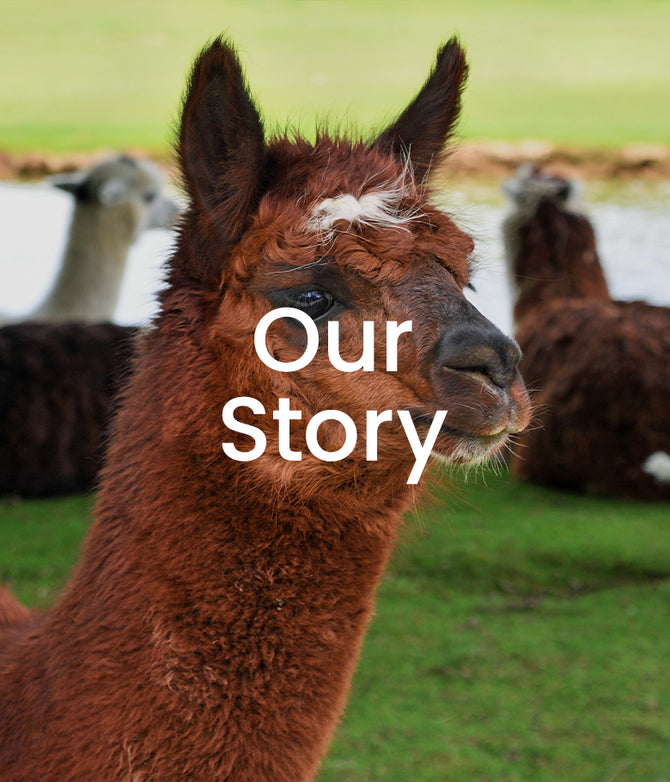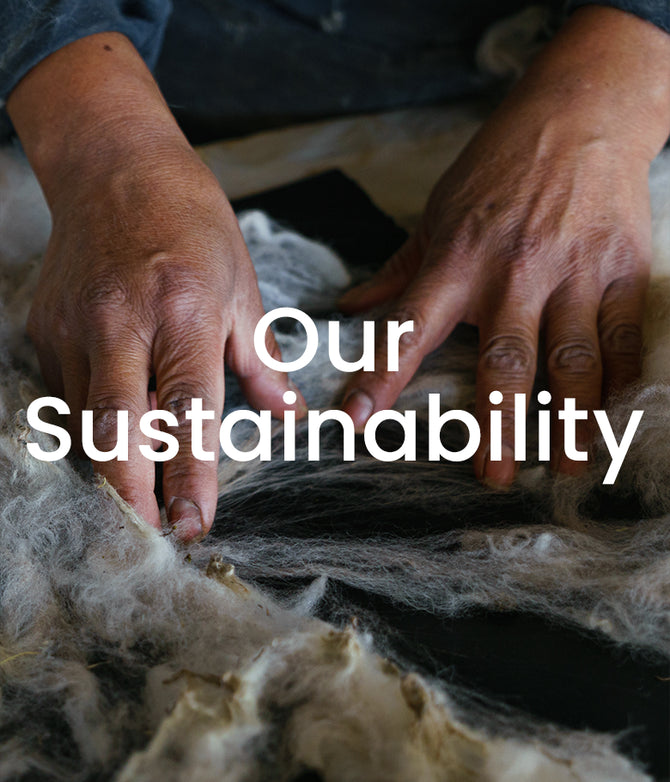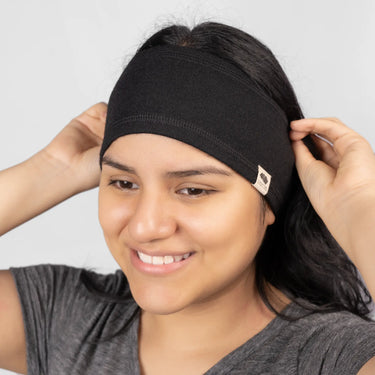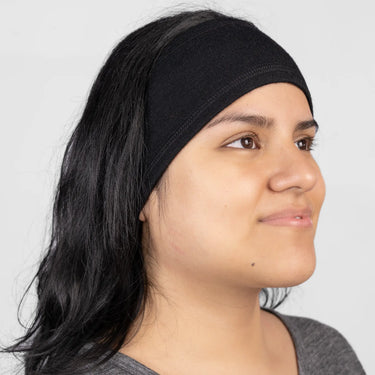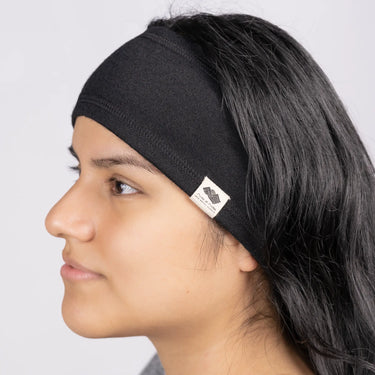Stirnband aus Alpakawolle
420 Mittelgewicht
Produktgewicht (mittel): 1 oz / 28 gr
Alpaca vs Merino
Alpaca Wool outperforms Merino.
Alpaca fibers evolved in the harsh Peruvian Andes over millennia, to keep you protected on any adventure.
Unique Semi-Hollow Fibers:
• Lighter Weight
• Higher Insulation
Smoothest Fiber Scales:
• Moisture Wicking
• Softer without Felting
High-Performance Fiber
Pack lighter, travel farther.
Get the most out of nature with the ultimate performance fiber. Explore the outdoors clean and dry, with naturally anti-bacterial and temperature regulating Alpaca Wool.
❊ Anti-bacterial & Odor-resistant
↻ High sweat-wicking
☁ High breathability
☀ UV - Protection
✓ Light & durable
Microplastic-Free World
We put a stop to plastic pollution.
It is our mission to make clothes that allow you to explore nature without contaminating it with microplastics.
This is the first step in making our entire catalog petroleum-free and biodegradable.
We use only biodegradable materials:
• 100% Alpaca Wool Fabric
• 100% Cotton Threads
• 100% Cotton Labels
Shipping & Returns
Free Shipping bei Bestellungen über 200 €
Größentabelle - Beanies
Größentabelle
Unsere Kleidung hat eine funktionelle Passform, die einem Slim Fit ähnelt. Wenn Sie eine normale Passform bevorzugen, empfehlen wir Ihnen, eine Nummer größer zu wählen.
Zentimeter:
| Größe | Voller Kopf | Umfang |
| Einheitsgröße | 55 cm | 61 cm |
| S/M | 55 cm | 58,5 cm |
| M/L | 58,5 cm | 61 cm |
So messen Sie:


LESS WEIGHT, LESS WASHING
Das beste Wanderstirnband
Fabric Specs
- 420g/m2 of 100% Alpaca Wool
- PFAS-free
- Kopfbandgewicht: 28 g
- Designed for hiking, trail running, climbing, traveling, and backpacking in all seasons
- Fitted cut with a natural stretch
- Pairs well with our Men's Long Sleeve & Women's Long Sleeve through winter and fall
Stoffpflege (Popup)
Stoffpflege
Natürlich gefärbte Kleidung
Natürliche Farbstoffe sind zwar umweltfreundlich, hautschonend und ergeben ansprechende Farben, binden sich jedoch nicht wie synthetische Farbstoffe an die Textilfasermaterialien. Dadurch kann es beim Schwitzen oder Reiben zu leichten Farbveränderungen kommen und die Farben können etwas ausbluten.
Wir empfehlen, naturfarbene Kleidung mit anderer dunkler Kleidung oder Ausrüstung wie Rucksäcken zu kombinieren. Wir empfehlen außerdem, die Kleidung so selten wie möglich zu waschen, um sicherzustellen, dass die einzigartige Farbe möglichst lange erhalten bleibt.
Wenn Sie feststellen, dass Ihre Alpaka-Kleidung gewaschen werden muss:
- Handwäsche oder Maschinenwäsche im Schonwaschgang in kaltem Wasser mit einem Feinwaschmittel/Wollwaschmittel.
- Waschen Sie mit ähnlichen Farben. Der Farbstoff wird das Waschwasser wahrscheinlich färben, aber die Farbe Ihres Kleidungsstücks wird sich nicht ändern.
- Wenn Sie das Kleidungsstück mit der Hand waschen, spülen Sie es in kaltem Wasser aus und drücken Sie das überschüssige Wasser vorsichtig aus.
- Legen Sie das Kleidungsstück zum Trocknen flach hin.
- Bügeln Sie auf einer warmen Stufe, wenn Sie das Bügeln für notwendig halten.
- Bewahren Sie Ihre Kleidungsstücke lieber gefaltet als aufgehängt auf.
Einige Dinge, die Sie vermeiden sollten:
- Verwenden Sie keinen Weichspüler oder Bleichmittel.
- Seien Sie vorsichtig bei der Verwendung von Zitronensäure, da diese auf natürliche Weise pflanzlich gefärbte Stoffe bleichen kann.
- Nicht im Trockner trocknen oder chemisch reinigen.
- Versuchen Sie, den Stoff nicht zu stark zu verdrehen oder auszuwringen.

NATURAL HIGH-PERFORMANCE
Das wärmste Winterstirnband
For thousands of years, alpacas have been adapting to extreme environments of the Andes Mountains, where temperatures range widely. The harsh highland conditions created the ultimate outdoor fiber, designed to keep you protected, clean, and comfortable.
Designed for the Outdoors
- Perfect Temperature
Semi-hollow fibers act as an internal A/C, balancing your body temperature in extreme climates. - Always Dry
High moisture-wicking fibers keep your body and clothes dry and sweat-free all day. - Clean & Fresh
Naturally anti-bacterial & odor resistant keratin fibers ensure your hygiene.
Go Further, Pack Lighter
Alpaca Wool is lightweight and does not require frequent laundering, letting you explore lighter.
- Light & Durable
Semi-hollow core fibers insulate and make the fabric lighter and resistant. - Wear More, Wash Less
Alpaca dries quickly and absorbs minimal moisture, preventing bacterial growth.
Luxurious Softness
- Smooth Fiber Scales
The scales of alpaca fibers are smoother than those of sheep wool. They help wick moisture away, while also having incredibly low moisture absorption. - 18 to 19 Microns* Alpaca Wool
The finest Alpaca Wool with naturally smooth fiber scales minimize felting and ensure luxurious softness on your skin without itching.
*Microns define the diameter of the fiber.
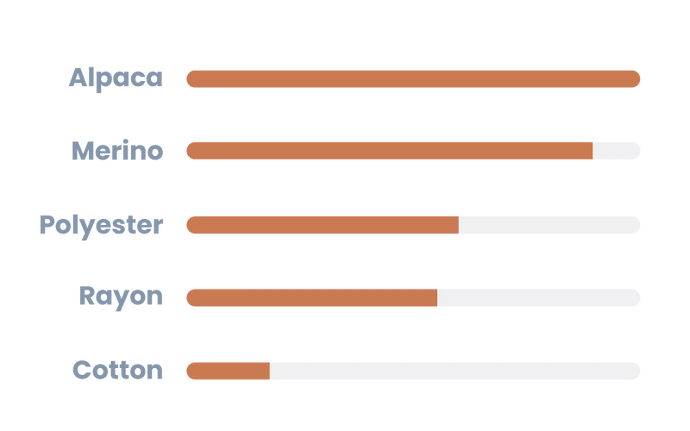
ALPACA WOOL: FIBER OF THE GODS
The Superior Fiber for the Outdoors
Alpaca wool is a superior choice for the outdoors and outperforms any other fiber: merino wool, cotton, rayon and polyester.
Alpaka im Vergleich zu anderen Fasern
Alpakawolle ist im Vergleich zu Merinowolle, Baumwolle und recyceltem Polyester die atmungsaktivste, leichteste und weichste Faser.
Erfahren Sie mehr über die Vorteile von Alpakawolle in unserem Blog .
| Alpakawolle | Merinowolle | Baumwolle | Recyceltes Polyester | |
|---|---|---|---|---|
| CO2-Fußabdruck | Niedrigste | Hoch | Hoch | Sehr hoch |
| Einzelner Ursprung | ✓ | ✖ | ✖ | ✖ |
| Biologisch abbaubar | ✓ | ✓ | ✓ | ✖ |
| Faserwaagen | Glatt | Stachelig | Weich | Gummiartig |
| Mikrometer (Durchschnitt) | 18 | 18 | 5 | 10 |
| Blasenbildung/Scheuern beim Schwitzen | Niedrig | Medium | Hoch | Hoch |
| Wärmekapazität | 5x Warm | Warm | Niedrig | Warm |
| Fasermarkierung | Hohl | Halbhohl | Hohl | Solide |
| Atmungsaktivität | Hoch | Mittel/Hoch | Höchste | Niedrig |
| Feuchtigkeitstransport | Hoch | Mittel/Hoch | ✖ | ✖ |
| Feuchtigkeitsspeicherung | <10 % | <30 % | 100 % | Variable |
| Hypoallergen (kein Lanolin) | ✓ | ✓ | ✓ | ✓ |
| Geruchsresistent | ✓ | ✓ | ✓ | ✖ |
| Antibakteriell | ✓ | ✓ | ✓ | ✖ |

LOW ENVIRONMENTAL IMPACT
Das beste Wanderstirnband
When wearing 100% Alpaca Wool, you can rest assured that your clothes are not contaminating nature.
Materialien und Inhaltsstoffe des Alpaka-Stirnbands
- 100% Alpaca Wool Fabric
- 100% Cotton Threads
- 100% Organic Cotton Labels
- 100% Natural Dyes or OEKO-TEX Certified Dyes
- OEKO-TEX Certified Silicone Fabric Finishing
- GOTS Certified Ink (for the labels)
Zero Microplastics & Toxic Chemicals
We created 100% plastic-free and biodegradable shirts so that you can wear your clothes knowing that you are not releasing any microplastics.
Microplastics are not only found in the environment but also in our bloodstream.
Our naturally dyed shirts contain zero synthetic dyes and we are looking for a natural replacement for the silicone fabric finishing.
Our wool is never Superwashed since alpaca fibers are naturally smooth.
Free-Roaming Andean Alpacas
Alpacas roam freely in their natural habitat in the highlands of Peru. Their farmers never harm or kill them for their wool. Alpacas create small footprints that do not damage the fields they graze on. When they eat, they cut the grass, promoting regrowth.
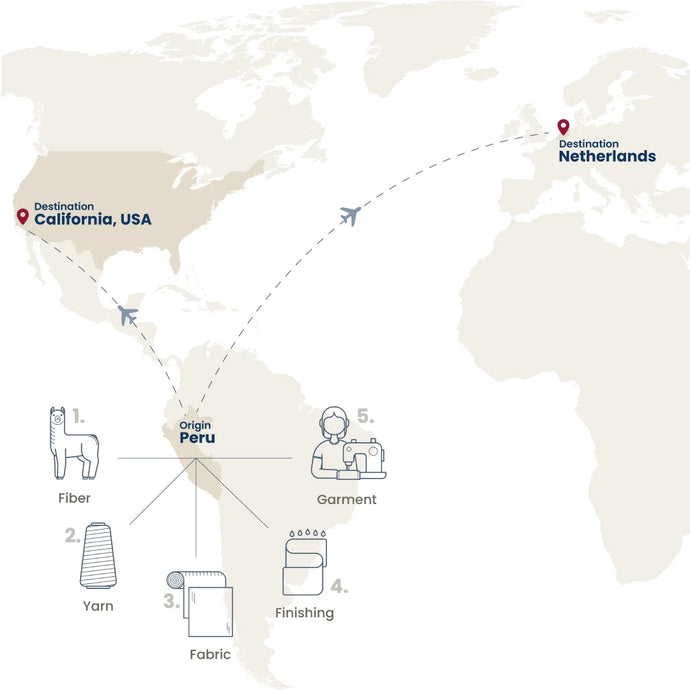
SINGLE ORIGIN SUPPLY CHAIN
Wo wurde dieses Stirnband hergestellt?
We use natural local resources and a short transparent supply chain. Our mission is to teach you as much as possible about how clothes should be made. Together we can move the fashion industry towards a sustainable future.
Designed & Made in One Country: Peru
Contrary to industry norms, every step involved in making our clothes is done in only one country: Peru, the home of our family. Our production in Peru includes fiber sourcing, yarn spinning, fabric knitting, dyeing, finishing, and garment sewing.
From Peru, our clothes go straight to California or Europe on its journey to you.
Low Carbon Footprint
Manufacturing in one country allows us to greatly reduce our carbon footprint and freight shipping. This is a major step on our journey to becoming a carbon negative company.
Transparency & Traceability
We avoid industrial farming by working with co-op farmers in the Andes. Doing everything in Peru guarantees we know how the alpacas and the workers involved are being treated.




